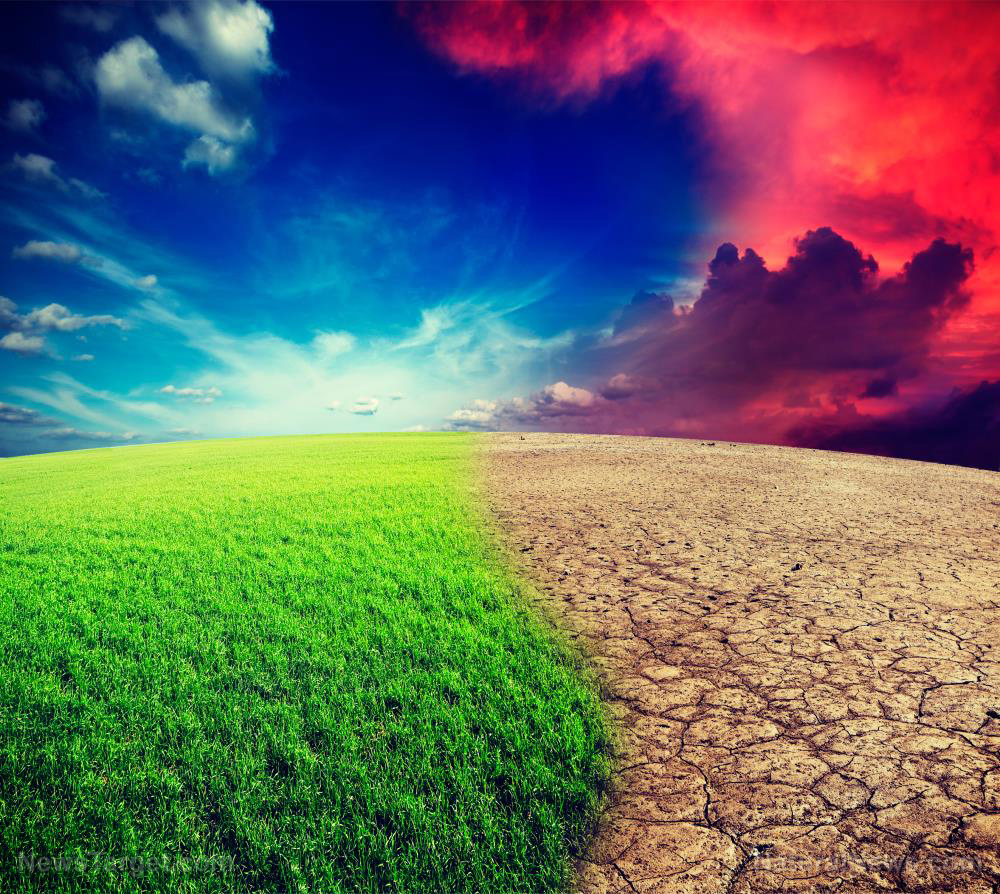New research shows polar bears are “fat and healthy” despite modest ice loss in the Arctic
03/08/2021 / By Divina Ramirez

Polar bears could become nearly extinct by the end of the century if climate change continues unabated. That is the narrative that climate alarmists have been using to shed light on the impact of so-called climate change. Yet according to a recent report on polar bears, the Arctic inhabitants face no real danger at all.
Published by the Global Warming Policy Foundation (GWPF) on Feb. 27, it showed that polar bear populations in the Arctic Circle are either stable or increasing despite modest ice loss.
Included in the report are survey results for eight of the 19 polar bear subpopulations in the region. Only two of those eight subpopulations showed insignificant declines after ice loss. The remaining six were stable or increasing despite major reductions in sea ice, bringing the global population size to 30,000.
In 2015, scientists reported a global population size of 26,000. It was believed that melting Arctic ice had a role in smaller polar bear populations. Climate alarmists even went on to claim that the melting of the ice was causing the animals to resort to cannibalism to avoid starvation. The report found no such thing. In fact, the bears were fatter and healthier than ever.
That is because plankton populations in the Arctic also reached record-highs last August. Plankton populations allow researchers to determine the health of marine animals in the area. Less summer ice meant more plankton, which meant more fodder for the entire Arctic food chain, including polar bears.
Polar bear populations are thriving
The report on polar bears was prepared by Susan Crockford, a zoologist and former professor at the University of Victoria in British Columbia, Canada. She has authored several papers on polar bears and walruses.
Crockford explained that while the climate narrative insists populations of polar bears are declining because of ice loss, population surveys such as the ones she used for her report do not support such a conclusion.
The report may have additional important implications. Last September, Facebook released an information center to fight climate change misinformation. Facebook uses the International Union for Conservation of Nature’s (IUCN) 2015 Red List of Threatened Species as an official source to fact-check posts on polar bears.
Crockford points out that in light of the new report, this list would need to be updated.
Crockford also noted that polar bears in Canada’s Western Hudson Bay, where the ground routinely thaws and freezes, experienced excellent ice conditions for the fourth year in a row in 2020. The animals were fat and healthy when they arrived there last summer.
And contrary to expectations, most of the polar bears that visited the bay remained on the deteriorating ice for much longer than usual in the summer.
The bears also stayed ashore longer in the fall, even after the freeze-up thresholds were reached, casting doubt on the presumably strong link between sea ice coverage and polar bear health and behavior.
Crockford explained that polar bears are more flexible when it comes to their habitats than scientists assumed previously.
The report also showed that less summer ice has so far been more beneficial for the bears than detrimental, as climate alarmists would have it. (Related: Time to put an end to the climate cult.)
Polar bears are regarded as the canary in the coal mine. Biologists examine these animals’ health and numbers when looking into the effects of climate change. However, the evidence shows that polar bears are far from being a highly-sensitive indicator species, said Crockford.
Visit ClimateAlarmism.news to learn more about declining polar bear populations and other lies propagated by climate alarmists.
Sources include:
Tagged Under: animals, climate change, climate science, conservation, ecosystem, environment, global warming, narrative challenge, ocean health, polar bears
RECENT NEWS & ARTICLES
COPYRIGHT © 2017 CLIMATE SCIENCE NEWS





















